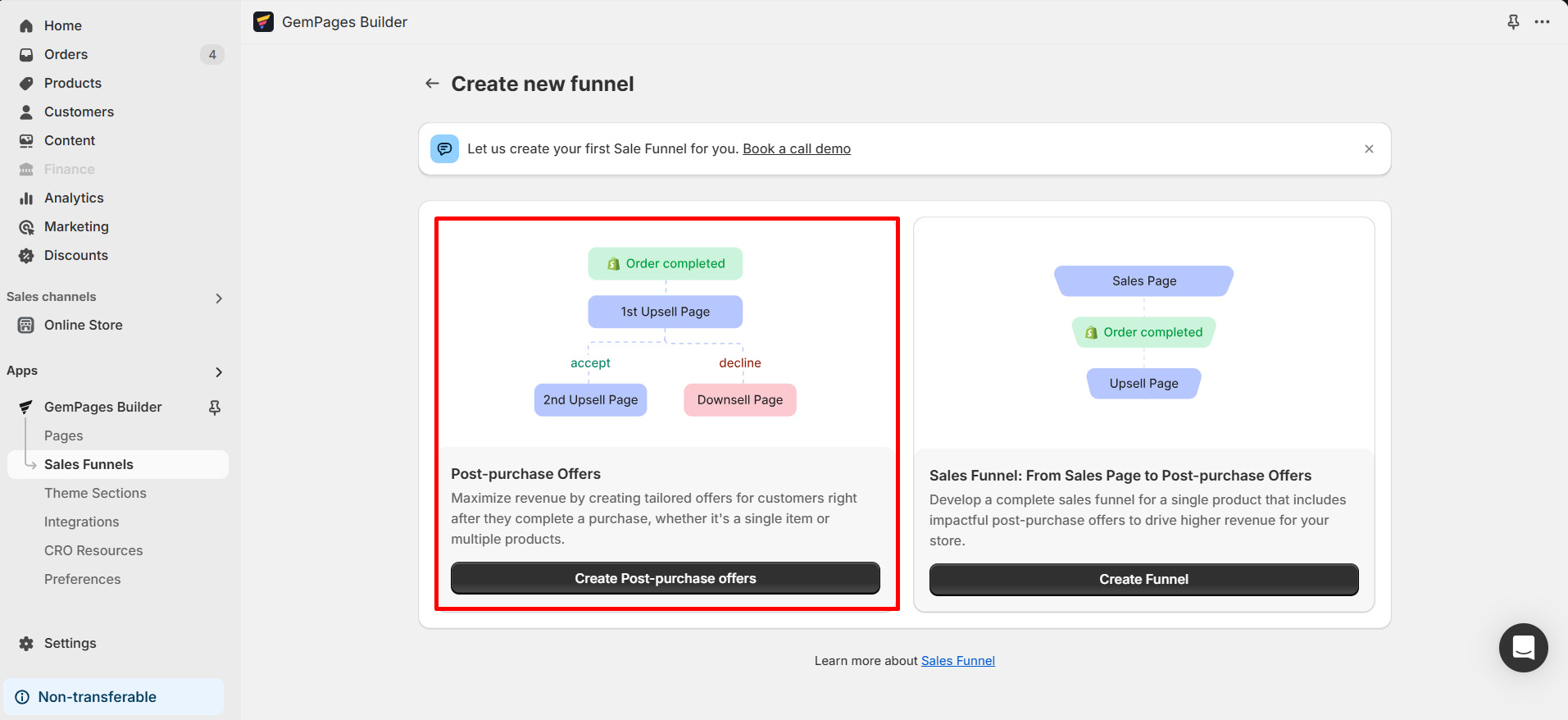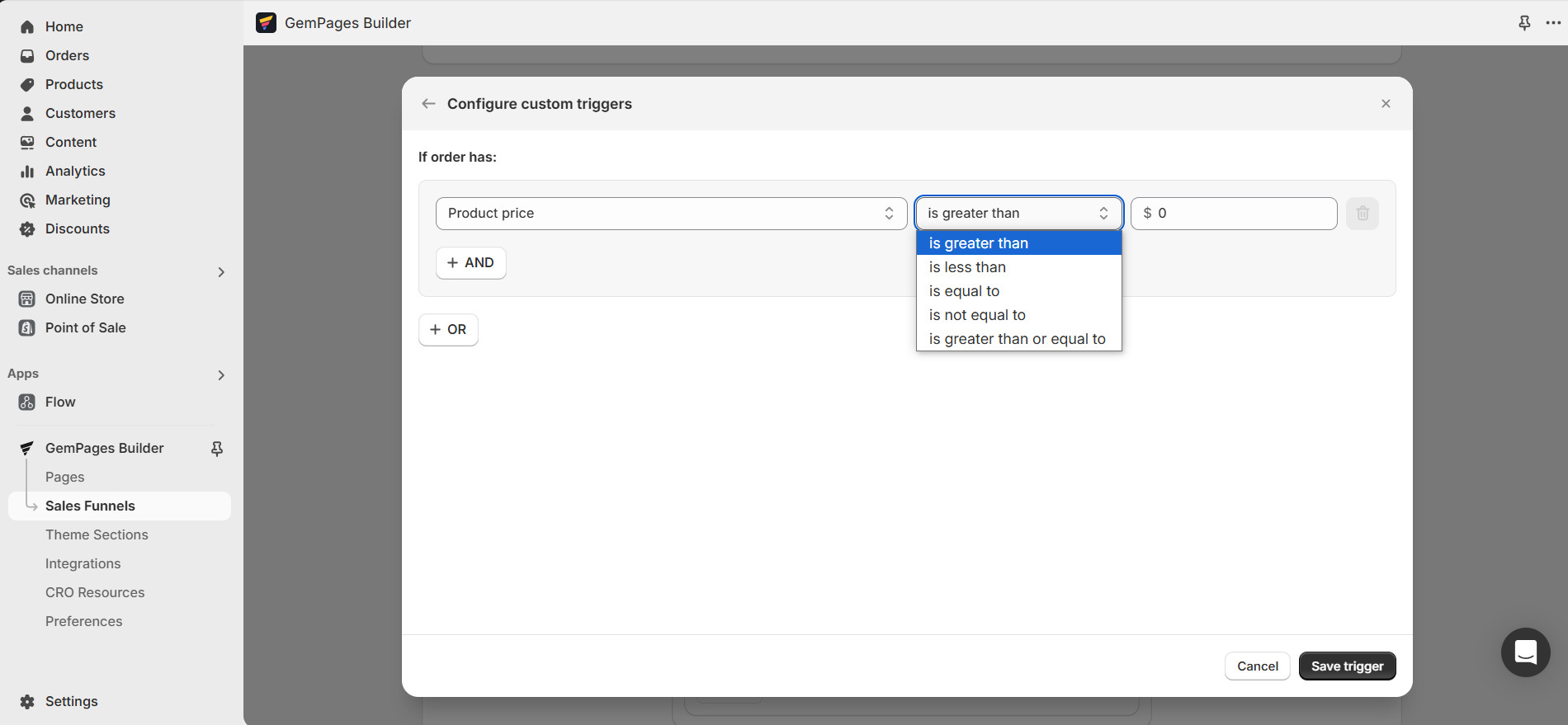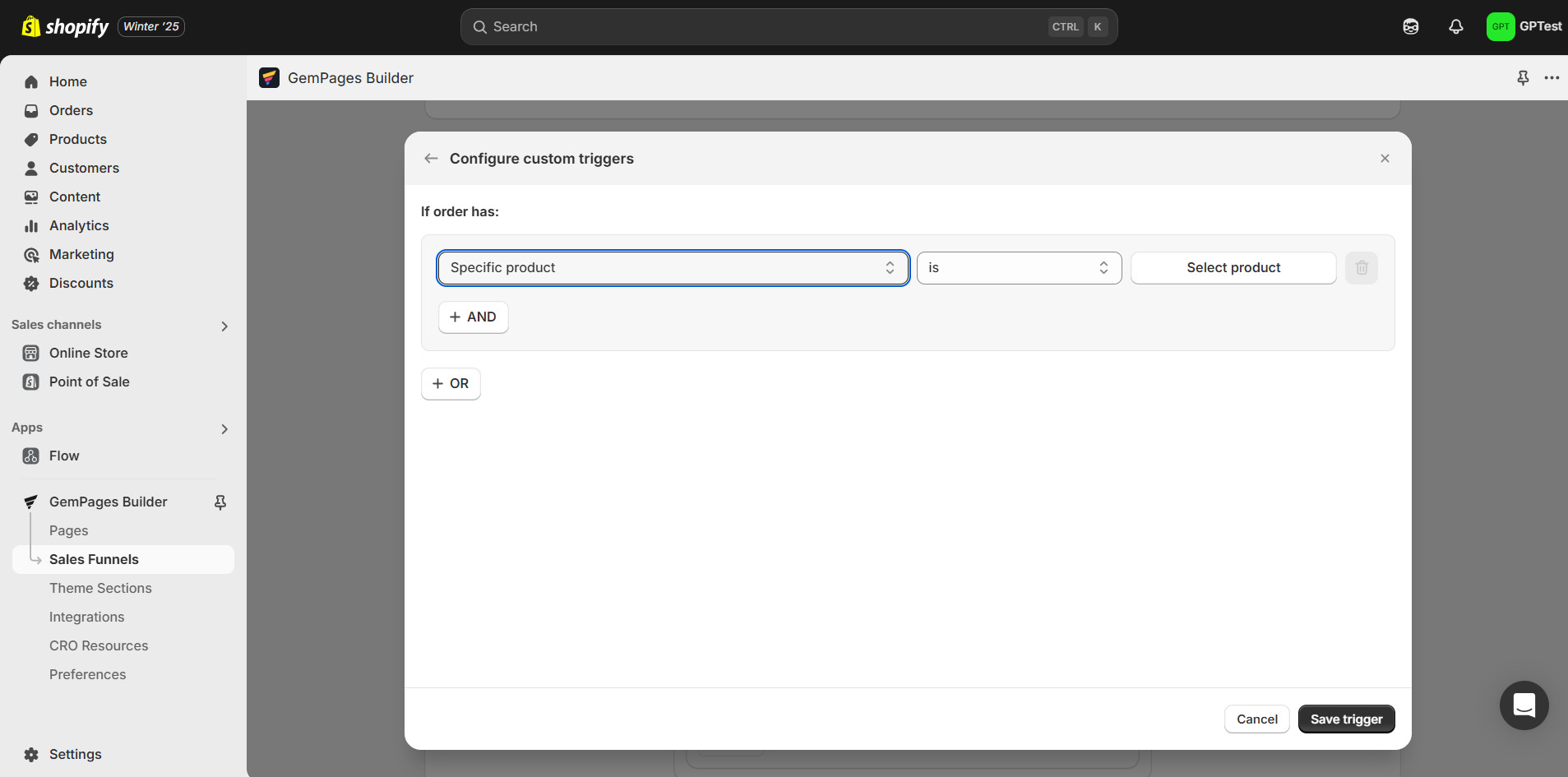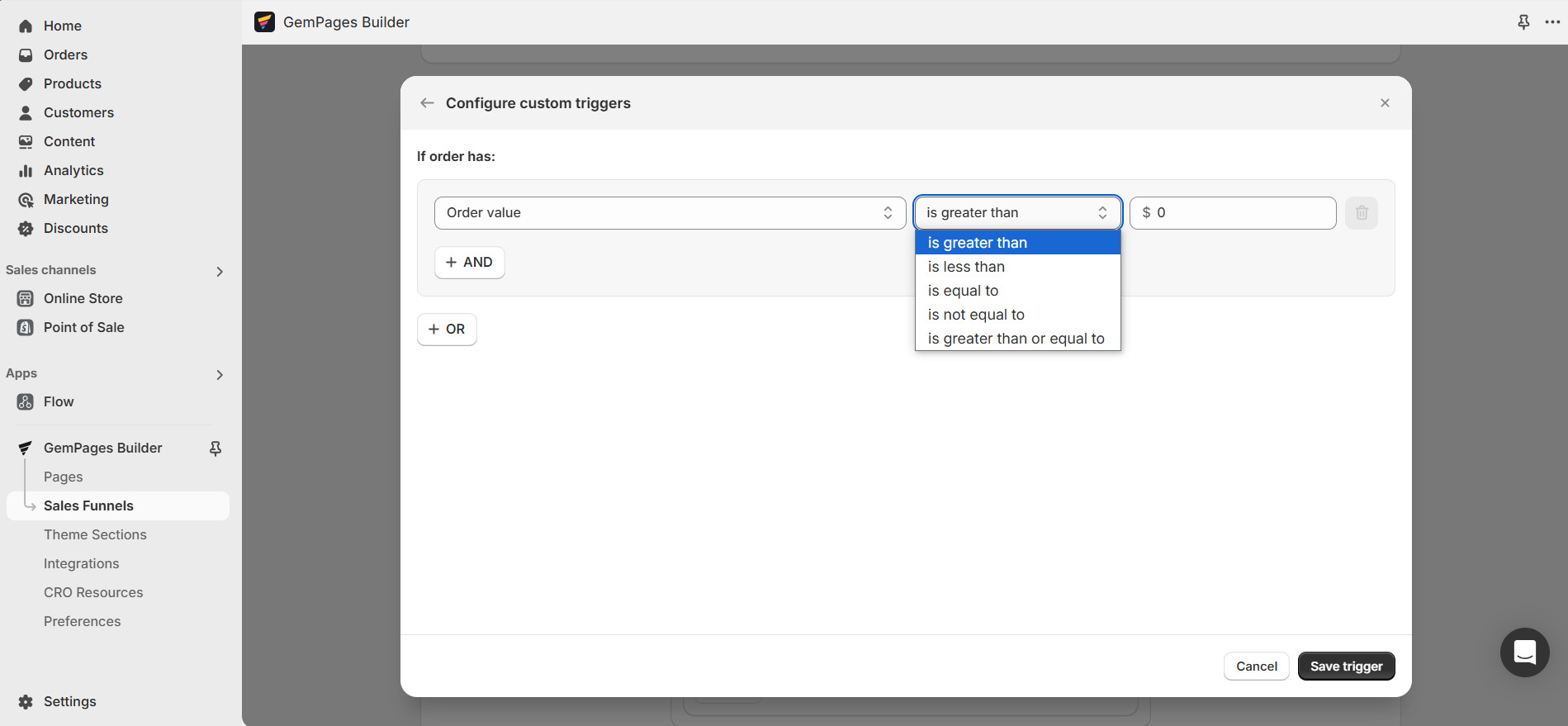What is Dynamic Trigger?
A Dynamic Trigger is a set of predefined conditions that automatically determine when a post-purchase offer should appear. Instead of showing the same upsell or downsell offer to every customer, you can customize offers based on specific details in the customer’s order.

Some examples include:
- Trigger a post-purchase offer if the order includes any product from a specific collection.
- Trigger a post-purchase offer for high-ticket products when the customer’s order value exceeds $10,000.
How to Use Dynamic Trigger?
Step 1: Open the Sales Funnel
If you already have a sales funnel set up, select it and click Edit. Otherwise, create a new funnel and set up a Post-Purchase Offer.


Step 2: Edit the Trigger
Choose the trigger type that suits your needs. GemPages supports three main types of triggers:

1. If you choose Any Products
- Tick the option for Any Products.
- Save the trigger.
The post-purchase offer will display if the customer buys any product from your store.
2. If you choose Specific Products
- Tick the option for Specific Products.
- Select products (no limitation on the number of products).
- Save the trigger.
The post-purchase offer will display when the customer buys one of the specified products.
3. If you choose Custom Triggers
- Tick the option for Custom Trigger.
- Set up the trigger conditions. Here are the details:
Product in Collection(s)

| is | If you set up “Product in Collection” is “Collection A,” any order with a product belonging to Collection A will lead customers to the post-purchase page. | |
| is not | If you set up “Product in Collection” is not “Collection A,” the customer’s order must not contain any product from Collection A to trigger the post-purchase page. | |
Product Price

| is greater than | Orders with a product price greater than the benchmark will trigger the post-purchase page. | |
| is less than | Orders with a product price less than the benchmark will trigger the post-purchase page. | |
| is equal to | Orders with a product price equal to the benchmark will trigger the post-purchase page. | |
| is not equal to | Orders with a product price not equal to the benchmark will trigger the post-purchase page. | |
| is greater than or equal to | Orders with a product price greater than or equal to the benchmark will trigger the post-purchase page. | |
Specific Product

| is | If you set “Specific Product” as “A Bowl,” the customer’s order must include this Bowl to trigger the post-purchase offer. | |
| is not | If you set “Specific Product” as not “A Bowl,” the customer’s order must NOT include this Bowl to trigger the post-purchase offer. | |
Order Value

| is greater than | Orders with a total value (excluding tax and shipping) greater than the benchmark will trigger the post-purchase page. | |
| is less than | Orders with a total value less than the benchmark will trigger the post-purchase page. | |
| is equal to | Orders with a total value equal to the benchmark will trigger the post-purchase page. | |
| is not equal to | Orders with a total value not equal to the benchmark will trigger the post-purchase page. | |
| is greater than or equal to | Orders with a total value greater than or equal to the benchmark will trigger the post-purchase page.. | |
Total Items

| is greater than | Orders with a total item count greater than the benchmark will trigger the post-purchase page. | |
| is less than | Orders with a total item count less than the benchmark will trigger the post-purchase page. | |
| is equal to | Orders with a total item count equal to the benchmark will trigger the post-purchase page. | |
| is not equal to | Orders with a total item count not equal to the benchmark will trigger the post-purchase page. | |
| is greater than or equal to | Orders with a total item count greater than or equal to the benchmark will trigger the post-purchase page. | |
Additional Conditions
- And: Combine two or more conditions. The customer order must satisfy all conditions for the post-purchase offer to appear.
- Or: Combine two or more conditions. The customer order only needs to satisfy one of the trigger conditions for the post-purchase offer to appear.
Example:
If your conditions are:
- Product price is greater than $1,000.
- Product collection is “Collection A.”
These orders will meet the conditions:
- An order contains one product that costs over $1,000 and belongs to “Collection A.”
- An order contains at least two products: one from “Collection A” and another priced over $1,000.
Frequently Asked Questions
1. Is the GemPages Sales Funnels feature free?
The GemPages Sales Funnels feature is available on all plans, including Free and Build plans, with a monthly upsell revenue limit of $100. You can use it for free up to that limit.
Suppose you want to remove the limit and unlock more potential. In that case, you can upgrade to the Optimize or Enterprise plans, which offer unlimited upsell usage with a small commission fee based on your upsell revenue.
2. Can a free product trigger the Sales Funnel feature?











Thank you for your comments